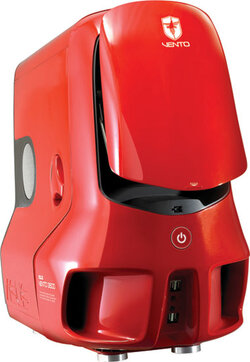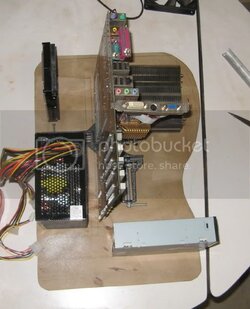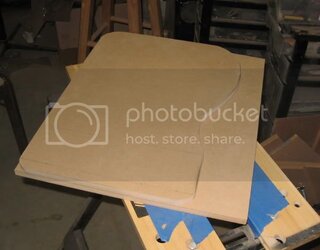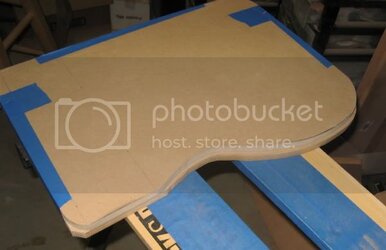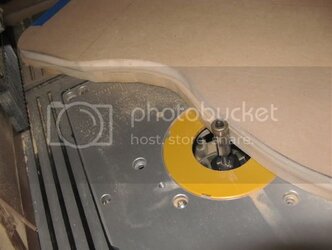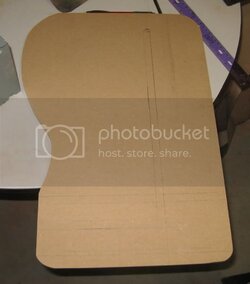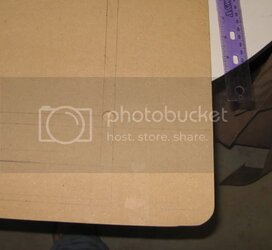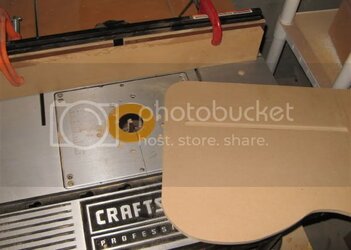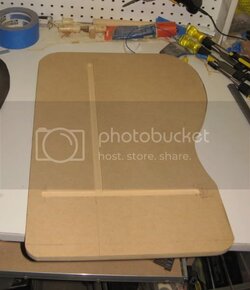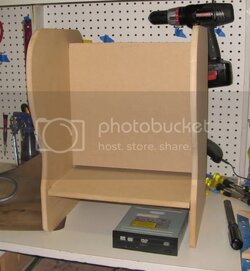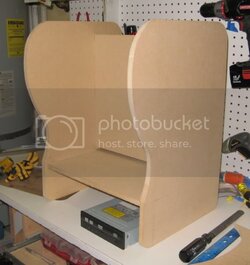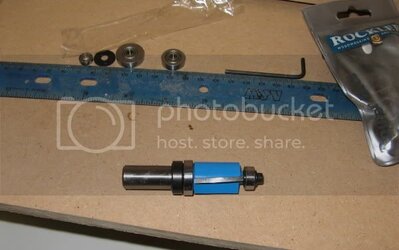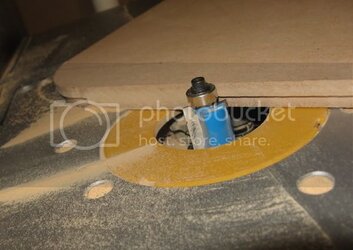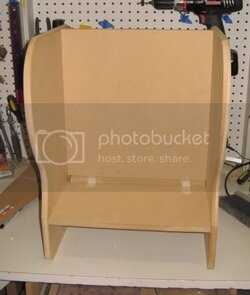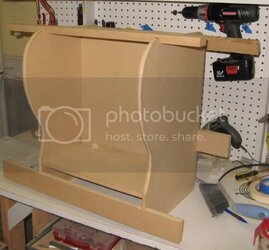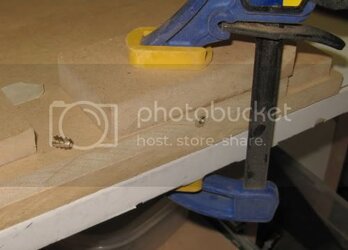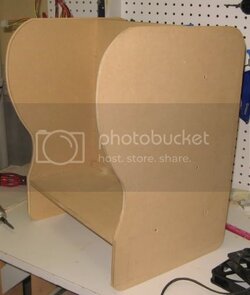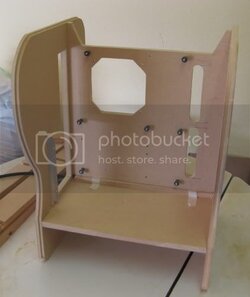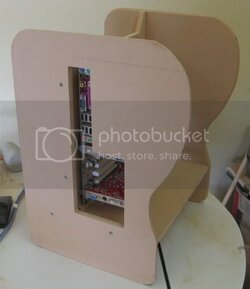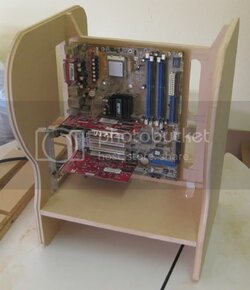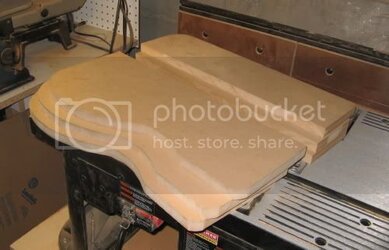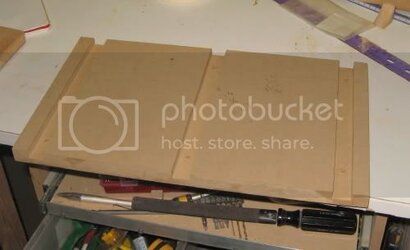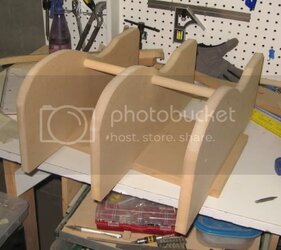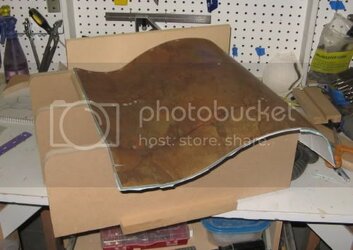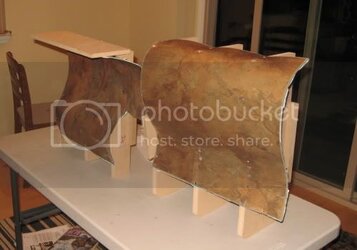- Joined
- Dec 7, 2003
Project R Unit
Hi all and welcome to my latest scratch build project. The tentative name is really unimaginative as you will see, but the case is pretty unique if I do say so myself. The inspiration for this project builds upon one of my previous projects (the Console project). I liked the idea of a curved plastic form. Gives a computer case a much more organic feel.
Here were some starting criteria for this project:
1) Going for a slightly smaller size build (as opposed to the Console project or the Exoframe)
2) But must fit a full sized motherboard, large video cards, and tower heatsinks
3) Reproducibility. This is not meant to be some crazy one-off project. If there is some sort of demand for this case, I want to be able to reproduce it at a reasonable cost to money and time.
4) Excellent airflow for full powered pcs.
Sketches
As usual I began with some sketches.
This curve here was the inspiration for my project:

This was the basic structural elements of the case:

I decided on 4 panels of ½” mdf. There are 2 side panels with curved edges that will definte the curved front panel. A structural horizontal panel, that will house the switch panel and 5.25 bay drives below. And a vertical panel, that will also serve to be a motherboard tray.
The entire curved front and back surfaces will be translucent plastic. I almost want to make the whole tower appear to be wrapped in curved plastic
Here is an outward appearance rendition:

Yes, I plan on having the plastic panels swing open (front as pictured, back as well). I am NOT sure that I will use the fancy piston openers—anyone who has worked with them knows what a pain they are (and very costly as they will probably need to be custom crafted).
Here are some planning pics:

You can see roughly from this pic how components will lay out.
Straight on picture, emphasizing the switch panel and dvd drives:


Dado planning. I am going to mill out dado grooves in the side panels—the horizontal and vertical panels will fit into these grooves lending serious structural stability.
.
Hi all and welcome to my latest scratch build project. The tentative name is really unimaginative as you will see, but the case is pretty unique if I do say so myself. The inspiration for this project builds upon one of my previous projects (the Console project). I liked the idea of a curved plastic form. Gives a computer case a much more organic feel.
Here were some starting criteria for this project:
1) Going for a slightly smaller size build (as opposed to the Console project or the Exoframe)
2) But must fit a full sized motherboard, large video cards, and tower heatsinks
3) Reproducibility. This is not meant to be some crazy one-off project. If there is some sort of demand for this case, I want to be able to reproduce it at a reasonable cost to money and time.
4) Excellent airflow for full powered pcs.
Sketches
As usual I began with some sketches.
This curve here was the inspiration for my project:
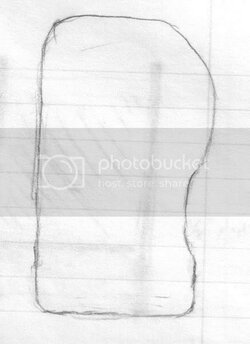
This was the basic structural elements of the case:
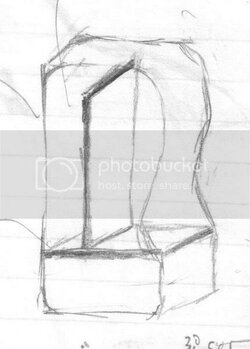
I decided on 4 panels of ½” mdf. There are 2 side panels with curved edges that will definte the curved front panel. A structural horizontal panel, that will house the switch panel and 5.25 bay drives below. And a vertical panel, that will also serve to be a motherboard tray.
The entire curved front and back surfaces will be translucent plastic. I almost want to make the whole tower appear to be wrapped in curved plastic
Here is an outward appearance rendition:
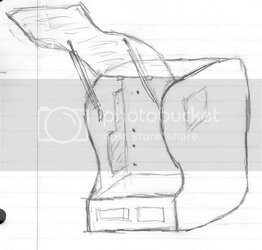
Yes, I plan on having the plastic panels swing open (front as pictured, back as well). I am NOT sure that I will use the fancy piston openers—anyone who has worked with them knows what a pain they are (and very costly as they will probably need to be custom crafted).
Here are some planning pics:
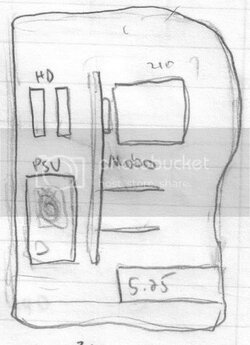
You can see roughly from this pic how components will lay out.
Straight on picture, emphasizing the switch panel and dvd drives:
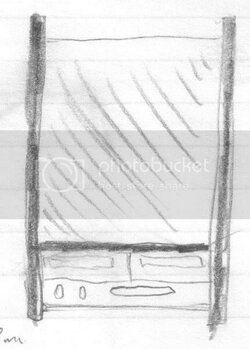
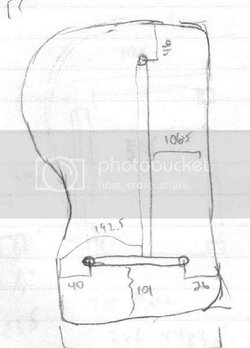
Dado planning. I am going to mill out dado grooves in the side panels—the horizontal and vertical panels will fit into these grooves lending serious structural stability.
.

